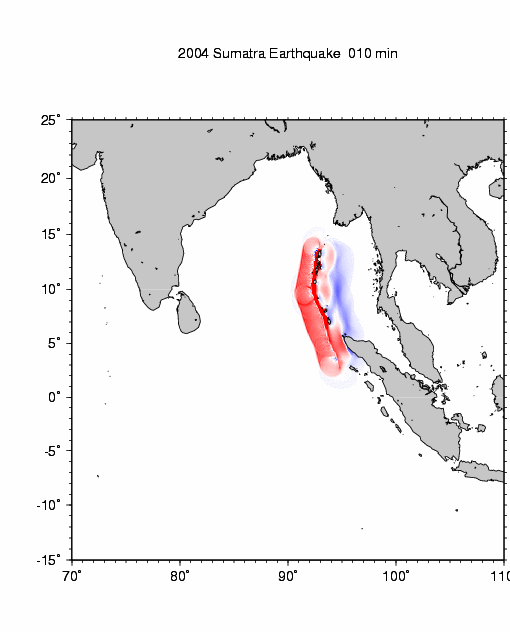If I understand correctly, when an earthquake occurs, energy will be transferred to the water, resulting in water waves. As the waves reach seashore, because the sea depth is getting shallower and wavelength is getting shorter, the height of the wave gets push up, resulting in tsunami. In other words in deep sea, water won't get pushed up as high as the water in shallow seashore.
Is my understanding correct? Is there a quantitative way to express the physics behind all this?

Best Answer
A tsunami is basically a shallow-water wave, even in deep seas. This means its velocity is $v=\sqrt{gH}$, where $H$ is the water depth and $g$ is the gravitational acceleration.
The energy of the tsunami scales as the square of its amplitude $A$, and thus the energy flux $S$ goes as $S\sim A^2 \sqrt{H}$. Conservation of energy then implies that the wave amplitude depends on the sea depth as $$ A \sim H^{-1/4}$$ a result known as Green's law.
For example, Green's law predicts that a tsunami with amplitude $A=1$m at $H=5000$m will run up to $A=4$m if the depth becomes $H=20$m.